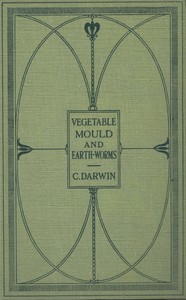The Formation of Vegetable Mould Through the Action of Worms by Charles Darwin
"The Formation of Vegetable Mould Through the Action of Worms" by Charles Darwin is a scientific publication written in the late 19th century. The book explores the significant role that earthworms play in the development and transformation of the soil, specifically focusing on the creation of vegetable mould—a fertile top layer of earth that supports plant growth. Darwin closely examines the habits and behaviors of worms to illustrate the complex biological processes
involved in soil formation. The opening of the work sets a foundation for Darwin's inquiry into earthworms by presenting the overarching premise of their contribution to soil health. He notes that while the topic may seem trivial, understanding how worms contribute to the formation of vegetable mould is important for recognizing the broader implications for ecosystems and agriculture. Darwin recounts his observations of worms in controlled experiments, detailing their behaviors, feeding mechanisms, and the instinctual actions they perform to create and maintain their burrows. He emphasizes that the continuous cycle of castings they produce enriches the soil, ultimately impacting the land's fertility over time. (This is an automatically generated summary.)
Read or download for free
| How to read | Url | Size | |||
|---|---|---|---|---|---|
| Read now! | https://www.gutenberg.org/ebooks/2355.html.images | 402 kB | |||
| EPUB3 (E-readers incl. Send-to-Kindle) | https://www.gutenberg.org/ebooks/2355.epub3.images | 3.0 MB | |||
| EPUB (older E-readers) | https://www.gutenberg.org/ebooks/2355.epub.images | 3.0 MB | |||
| EPUB (no images, older E-readers) | https://www.gutenberg.org/ebooks/2355.epub.noimages | 201 kB | |||
| Kindle | https://www.gutenberg.org/ebooks/2355.kf8.images | 3.1 MB | |||
| older Kindles | https://www.gutenberg.org/ebooks/2355.kindle.images | 3.1 MB | |||
| Plain Text UTF-8 | https://www.gutenberg.org/ebooks/2355.txt.utf-8 | 373 kB | |||
| Download HTML (zip) | https://www.gutenberg.org/cache/epub/2355/pg2355-h.zip | 3.1 MB | |||
| There may be more files related to this item. | |||||
Similar Books
About this eBook
| Author | Darwin, Charles, 1809-1882 |
|---|---|
| Title |
The Formation of Vegetable Mould Through the Action of Worms With Observations on Their Habits |
| Note | Wikipedia page about this book: https://en.wikipedia.org/wiki/The_Formation_of_Vegetable_Mould_Through_the_Action_of_Worms |
| Credits | David Price |
| Reading Level | Reading ease score: 61.5 (8th & 9th grade). Neither easy nor difficult to read. |
| Language | English |
| LoC Class | QH: Science: Natural history |
| Subject | Earthworms |
| Subject | Soils |
| Subject | Humification |
| Category | Text |
| EBook-No. | 2355 |
| Release Date | Oct 1, 2000 |
| Most Recently Updated | Nov 5, 2021 |
| Copyright Status | Public domain in the USA. |
| Downloads | 408 downloads in the last 30 days. |
| Project Gutenberg eBooks are always free! | |

